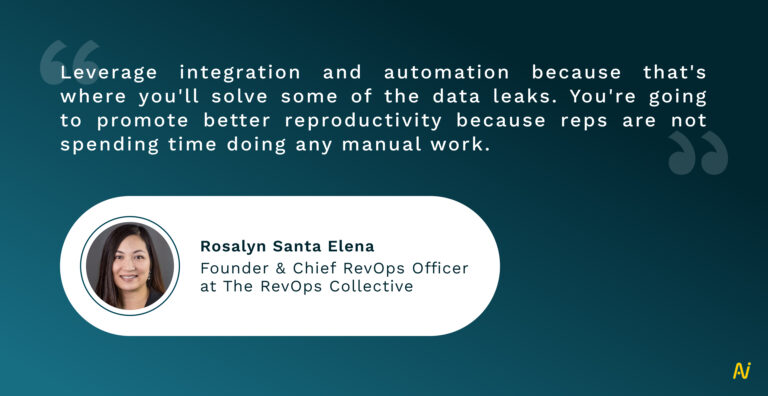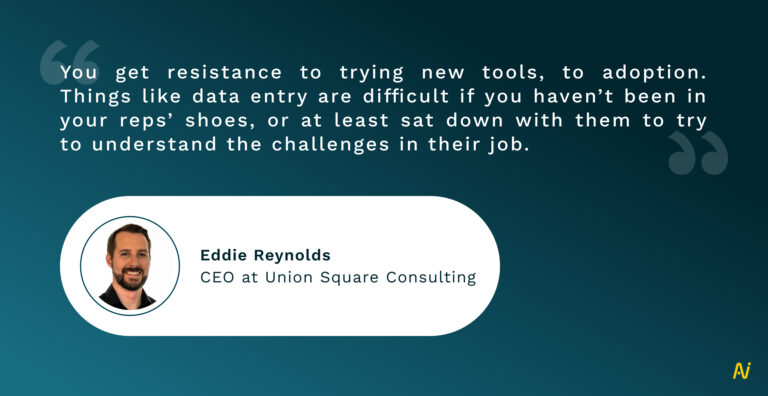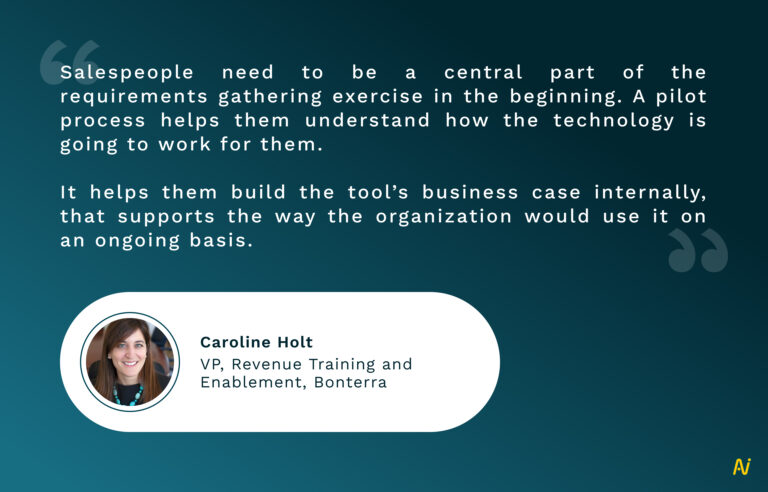CRM. A critical hub of the RevOps machine today and, therefore, one of the steepest investments companies make.
But do reps adopt these tools the way they should?
On average, the modern sales tech stack has 13 tools, which is a lot. Yet companies have burned $313,000 because reps resist adopting these tools.
For as much as 76% of companies, poor adoption of sales tech is one of the major reasons they miss key goals like sales quota attainment.
CRM Adoption Is Crucial for RevOps Success
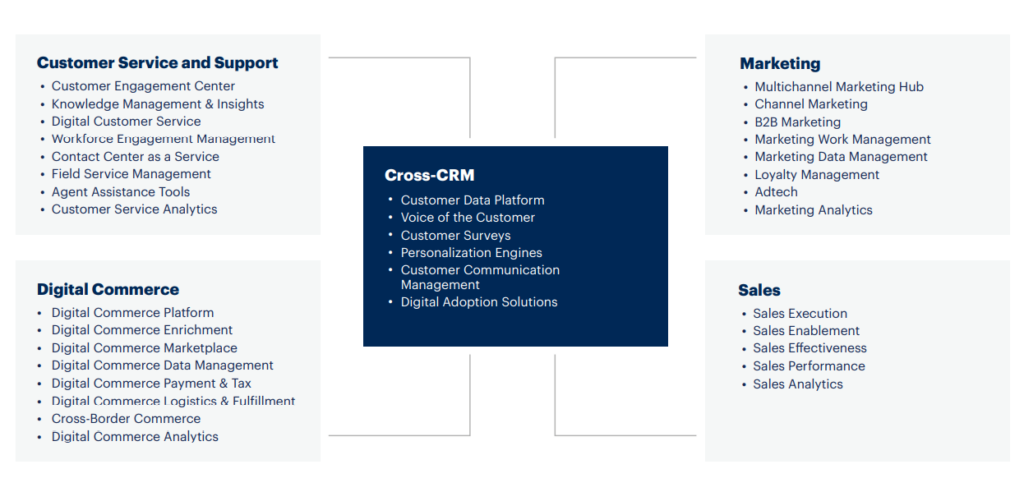
Reps are one of the significant spokes of the RevOps machine. They’re well aware that the money they make for the company directly translates into their commission.
And yet, many of them move against CRM adoption – the one sales tech tool that will get them ahead of the competition.
Why?
- Reps need manually enter data into the CRM. This increases the likelihood of making errors which, in turn, is a burden on reps.
- Businesses lack the support of CRM implementation experts who set up training for sales managers and reps. These experts also aid teams in transitioning to using the tool. Without their guidance, reps and managers are both left clueless about the real usefulness of the CRM.
Ultimately, reps view the CRM negatively. To them, it’s a tedious system that wastes their precious selling time. Instead, they have to bury their heads in manual data entry (not very motivating).
Other times, they think that managers and revenue leaders enforce CRM adoption to merely monitor their activities and sales output. And that the system lacks any actionable insights which will help them do better.
The end result – low CRM adoption, leading to low win rates.
For companies, this spells huge losses. One of their most significant investments ends up bringing in the least ROI. RevOps teams bear the brunt for most of it, having to justify a steep loss of revenue.
How Can You Improve CRM Adoption?
CRM data leakage is the root cause of most CRM adoption problems which further drive low usage of the system. What does it mean?
Data leakage is the result of low-quality and inaccurate sales data entering the CRM. It ultimately affects insights, creates confusion for reps and disrupts pipeline health – causing a loss of valuable time and money.
The good news is that you can combat CRM data leakage and empower your reps to increase CRM adoption. All you need are four methods of sealing data leaks.
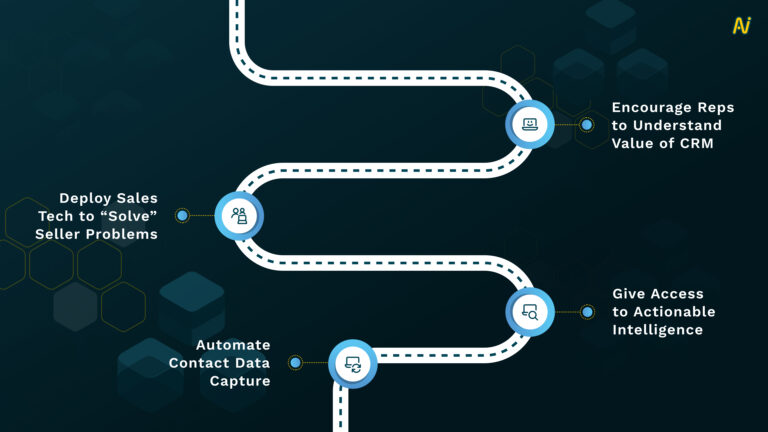
Let’s dive in and find out more!
1. Automate Contact Data Capture
a. Selling is complicated
It’s no revelation that selling is more complex today than ever before. As much as 50% of sellers think their workflows are too complex.
The result – productivity challenges.
- Compared to two years before, nearly 77% of sellers are putting in more hours in 2022.
- As remote work rises globally, 70% of professionals (including buyers) will work remotely in 2023. And 67% of sales reps will operate under a hybrid or fully remote setup.
b. Manual CRM entry only makes matters worse for reps
It creates constant friction between man and machine, which does not contribute to an efficient sales setup. Sales reps don’t get the time they need to close deals successfully and bring in more revenue.
Reps want to do better. In 2023, 29% of sales reps want to improve the efficiency of the sales process, while 18% want to leverage CRM to its maximum potential.
c. Automation streamlines processes
An automated solution does all the work for reps, making developing an efficient sales process easier.
It identifies CRM gaps, captures missing data, and adds this to the system without rep intervention, creating a complete pipeline.
So far, automation has worked well for sales teams!
- High-performing sales teams automate sales tasks and leverage competitive data to improve their playbook.
- 61% of overperforming leaders use CRM to automate their selling process.
- Not just buyer conversations. Automation also unlocks help with documentation for proposals, business pitches, quotations, service agreements, and more.
- With automation, sellers aren’t required to record meeting information after each buyer interaction. Instead, conversational intelligence automatically records or transcribes each conversation and extracts actionable information.
That’s because by automating parts of their process, sales leaders free up rep time to focus solely on selling.
So, your reps can close deals faster while the CRM and automation take care of everything else.
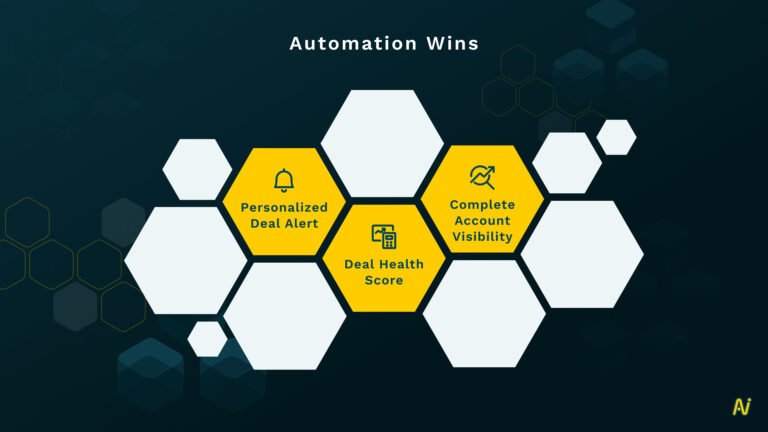
d. Improve pipeline health with automated alerts and complete account visibility
CRM automation also personalizes deal alerts based on a rep’s selling technique and position.
For example, if a prospect is close to becoming a customer, the seller responsible for the deal will get an automated alert. Using this information, the rep can take action. They can provide the buyer with everything needed to win the deal – taking the sale to the finish line.
Nektar’s automated solution for CRM adoption has an additional useful feature called deal health score. This captures sales parameters like deal momentum, buyer-seller engagement, and playbook compliance.
Deal health scores give reps a reliable and updated status of ongoing deals.
For instance, there could come a time when deal momentum has slowed down, or the seller isn’t interacting enough with the buyer. Nektar notifies the seller of this development, so the rep can nurture the buyer and close the deal instead of losing.
Sales teams also have to stay cognizant of the constantly changing business environment.
25% of buyers switch their jobs annually. But key stakeholders moving out of the buying organization hurts ongoing deals. As much as 80% of sellers report this as a reason for losing or delaying at least one sale.
Automation provides complete account visibility and buyer map, driven by data capture for the CRM. Because of this, reps can multithread seamlessly.
A multithreading score then measures whether or not your sellers actively and effectively engage with all stakeholders in each buying group. So you can understand how well automation works for your reps.
2. Give Sales Teams Access to Actionable Intelligence
a. Access to sales insights is a challenge
Actionable intelligence is the key to winning deals. It equips your sales teams to act on their feet and close deals.
Unfortunately, not all sales teams have easy access to insights.
- 45% of reps cite incomplete data as their biggest data challenge.
Poor CRM adoption leads to incomplete data existing in the system. Analytics based on incomplete data isn’t reliable at all. That’s because the analysis and insights are flawed if the information itself, to start with, is dirty and inaccurate.
- 54% of prospecting teams can’t access actionable intelligence in real time.
The result? You’re stuck in a vicious cycle that seems almost impossible to break.
Delayed insights and ambiguous sales processes further strain reps’ selling capabilities.
- 27% of sellers fail to achieve their sales quota.
Not just that. They also can’t put in the effort to increase productivity because they have no actionable intelligence.
b. Productivity takes a dive
Even high-performing companies struggle with inaccurate CRM data and a lack of insights. The top 30% of RevOps organizations have trouble accurately tracking performance and sales success, and a lot less can draw insights from the CRM data. Therefore, goal setting takes a considerably long time.
Ultimately, lack of visibility into the pipeline, systemic failures, and ineffective sales processes pave the path for revenue leaks – one of the main reasons behind a company’s financial losses.
c. Actionable sales intelligence fosters better workflow
Deep sales intelligence solves the problem by fostering deal prioritization and actionable selling workflows.
It transmits real-time notifications and dynamic signals for developments in a deal – such as financing, intent, and new buyers on the committee.
Insights from RevOps intelligence also offer valuable details on where your sales reps spend their time. And if they choose to spend it on high-impact sales activities over no-impact tasks.
You get access to granular information on the sales process, drawing data from tools to buyer communication channels (including email, phone, virtual meetings, calendars, Slack, and more).
Besides insights, activity data capture fuels predictable revenue by compiling comprehensive contact data, pipeline opportunities, and high-intent deals into a single dashboard.
This empowers managers to confidently run coaching and guided selling with necessary actionable insights at their fingertips.
d. AI-based guided selling drive sales success
Building on increased productivity, driven by AI-based guided selling, reps can identify patterns, fostering better and more impactful business decision-making.
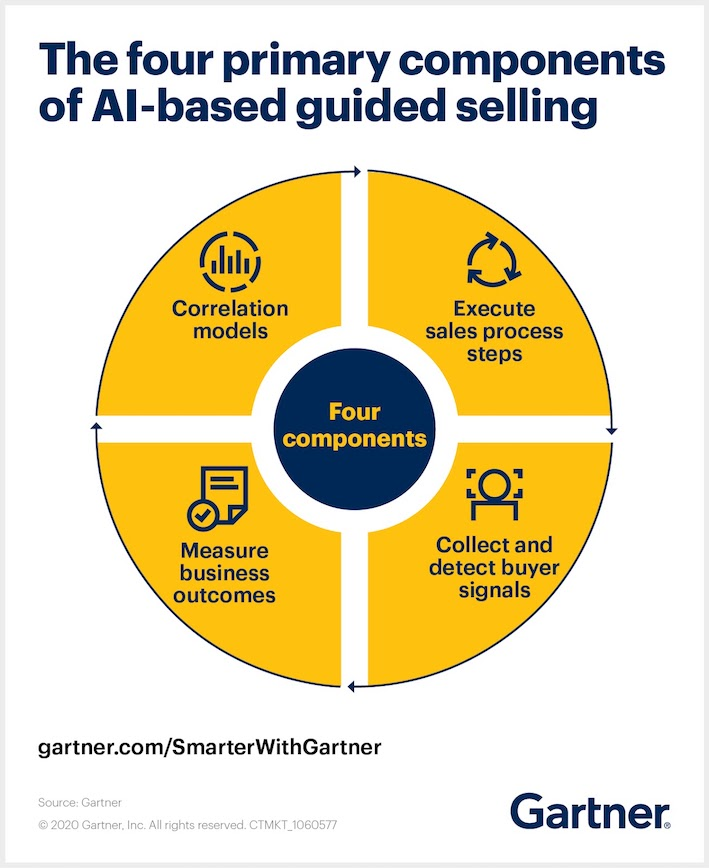
According to Gartner, AI-based guided selling has two forms – prescriptive and predictive.
- Prescriptive recommends the next best actions
- Predictive provides insights that give statistically relevant indicators about steps in the selling process.
These rely on leading and lagging indicators derived from RevOps intelligence to guide sellers on their deals.
Particularly thanks to leading indicators, your reps know which high-value deals require additional nurturing and deal health. They also aid in predicting whether or not a rep will successfully sign on a prospect. And if not, managers can nudge them in the right direction in real-time.
Sales intelligence, thus, provides all the insights necessary – including performance measurement, deal prioritization, granular contact data, and leading indicators – to encourage reps to increase CRM adoption.
3. Deploy Sales Tech Targeted to “Solve” Seller Problems, Not Add to Them
a. Tools are tailored to the buyer, not user
Generally, leaders decide to purchase a sales tool. But it’s reps, not leaders, who are involved in the day-to-day selling process.
Vendors eventually follow the leaders’ and managers’ requirements, tailoring the CRM solution to their needs.
That means, the tool is purchased based on buyer (leaders, managers) needs and not user (sales reps) needs.
Because leaders don’t have adequate insights into user challenges, they misjudge the problems to be solved. As a result, features that make reps’ lives easier – scheduling meetings, tracking buyer behavior, automating contact capture, extracting conversational intelligence, and more – aren’t included.
This big miss on the part of leaders and managers only fuels low CRM adoption and affects alignment between sales and marketing.
b. Sales and marketing misalignment is real
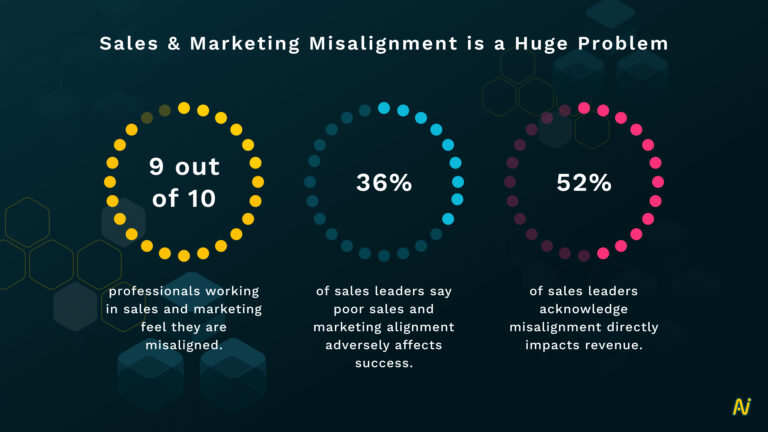
9 out of 10 professionals working in sales and marketing feel they are misaligned.
The consequences impact RevOps.
- More than a third (36%) of sales leaders say that poor alignment between sales and marketing hinders the success of both departments.
- More than half (52%) of them acknowledge that misalignment directly impacts revenue.
Despite the availability of multiple tools, selling doesn’t get easier. On the contrary, it could make things more complicated for reps. 86% of sellers are unsure which tool they should use for what job.
Adding to the problem is a disintegrated sales tech stack. An organization’s percentage of integrated sales tools is, on average, as low as 28%.
Summing up, CRM adoption isn’t connecting frontline teams with complete visibility, affecting a rep’s selling ability.
Moreover, CRMs come largely with outdated user interfaces. It gives reps little incentive to update or use the system, further discouraging adoption.
c. Leaders need to develop trust among teams
Trust goes a long way in managing changes in the sales process.
To begin with, you may include salespeople in the sales tools review and evaluation process. You can learn about the challenges they face on a typical workday and their daily tasks. Using their inputs, you can select a CRM system that works for reps, not against them.
If you’re wondering what questions can help you arrive at a decision, here are some:
- What challenges do they face during the selling process?
- What’s stopping them from improving their process?
- Time spent on selling vs. enriching the CRM manually?
- Do they have complete visibility of the sales pipeline?
- Is the CRM helping them multithread successfully?
- Does the CRM provide the necessary information to align them with marketing?
When managers and reps collaborate to develop efficiency-improving processes and take steps to increase productivity, it’s far easier to roll out CRM adoption. This also encourages reps to be more receptive to change, adopt the tool and use it extensively.
d. Introduce tools for user, not buyer
Eliminating tools that aren’t unnecessary cuts down the pain of remembering multiple usernames and passwords. It also reduces the work you’ll have to do later to give teams visibility into the data and integrate the sales tech stack for better reporting.
Selecting the right tool saves precious minutes you’d have was ted scouring the web for buyer information, sending generic messages, or using outdated contact details. It facilitates automation, reduces repetitive work, and optimizes available resources and workforce use.
The result?
Your reps have more time to talk to potential customers and convert them.
4. Encourage Reps to Understand Value Behind CRM adoption
a. Change is intimidating
An ever-present issue is the unwillingness to adapt.
In a hustling environment where change can disrupt processes, reps can get too comfortable using familiar tools (like spreadsheets).
As such, they could feel intimidated by tools they’ve never used before.
Sometimes, reps view CRM as a monitoring tool that tracks their activity. It then collects data that may be used as evidence against them when they underperform.
This mistrust and lack of understanding lead to poor CRM adoption.
b. Reps need a demonstration of value from the CRM
For reps to wholly adopt a tool, it’s important they understand its “need.”
One way to do this is by demonstrating how the CRM adds value to selling processes, helping them achieve higher win rates and revenue.
Complementing this with continued coaching after the initial training ends will enable them to keep unlocking new cases from the system.
Reps start understanding that an AI-backed CRM is helpful. It collects and processes contact and activity data, improving accuracy and powering informed decision-making.
Plus, clean data unlocks otherwise hidden insights, maximizing the CRM’s capabilities and boosting ROI.
There are two other ways to foster a value mindset:
- Setting clear expectations and offering incentives to sales representatives who maintain and update their CRM.
- Using CRM data to further simplify reps’ workflows and share actionable insights. This gives your reps complete and current information with contextually relevant best practices to help them excel.
c. Trust and value drive predictable revenue
The ultimate purpose of CRM adoption is to streamline processes and drive predictable revenue for sales teams.
Sales tools shouldn’t complicate things for sellers, operations, and enablement executives who use and manage these systems.
It’s important to understand “who” will use the tool. These end users are central to the tool selection process.
Setting “user simplicity” as the benchmark enhances natural CRM adoption, making the entire sales tech ecosystem much more sustainable.
Empower your Reps with Clean and Complete CRM Data
Arming your sales and marketing teams with confidence in the CRM is the key to unlocking its true value.
Nektar does just that by filling CRM data leakage gaps that traditional solutions leave behind with its no-code solution. It captures revenue activity data from email, calendar, chats, and social channels across all buyer lifecycle stages.
With accurate and complete data in your CRM, reps can leverage reliable insights to:
- Identify and target the best-fit accounts
- Segment audiences for personalized communication
- Capture high-quality leads
- Automate sales motions
- Increase pipeline performance and forecast accuracy
- Maximize renewal or repurchase, upsell, and cross-sell opportunities
- And ultimately, displace the competition.
Don’t miss the opportunity to put the ball back in your rep’s court.

